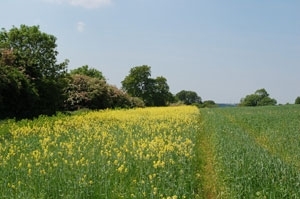 In the 1980s we ran a series of trials asking farmers to reduce the sprays along the six-metre crop margin - the headland.
In the 1980s we ran a series of trials asking farmers to reduce the sprays along the six-metre crop margin - the headland.
The results were astonishing: arable flowers that had been lost for a generation reappeared, insect abundance increased and consequently young partridge chicks survived as well as they had in pre-war days.
The aims of conservation headlands are to encourage the growth of a number of broad leaved weed species and hence the insects which live on them. These insects in turn are vital food items of gamebird chicks and other birds. The weeds and their seeds provide food for small mammals and the flowers are important nectar sources for butterflies. Conservation Headlands are also a refuge for rare and declining plants, once common members of the arable flora, and for many species of beneficial insects.
For maximum benefits, attention should also be given to adjacent field boundaries. Correct management will provide nesting sites for gamebirds and songbirds, breeding sites for butterflies and other insects, overwintering habitat for beneficial insects, and help to prevent these areas from becoming potential sources of weed infestation.
For more advice about headlands and field margins please contact our advisory department.
A diagram of a conservation headland, detailing how one is composed, can be downloaded here.
*You may change your mind any time. For more information, see our Privacy Policy.